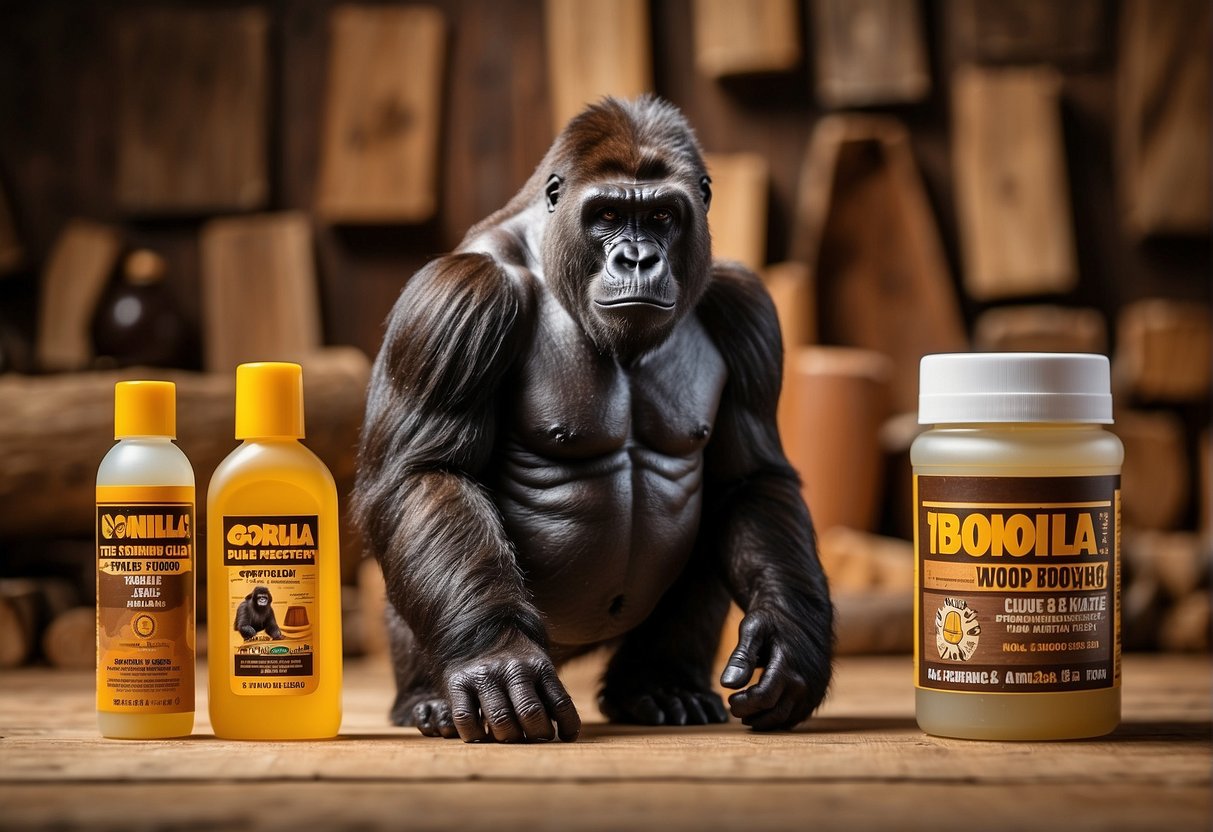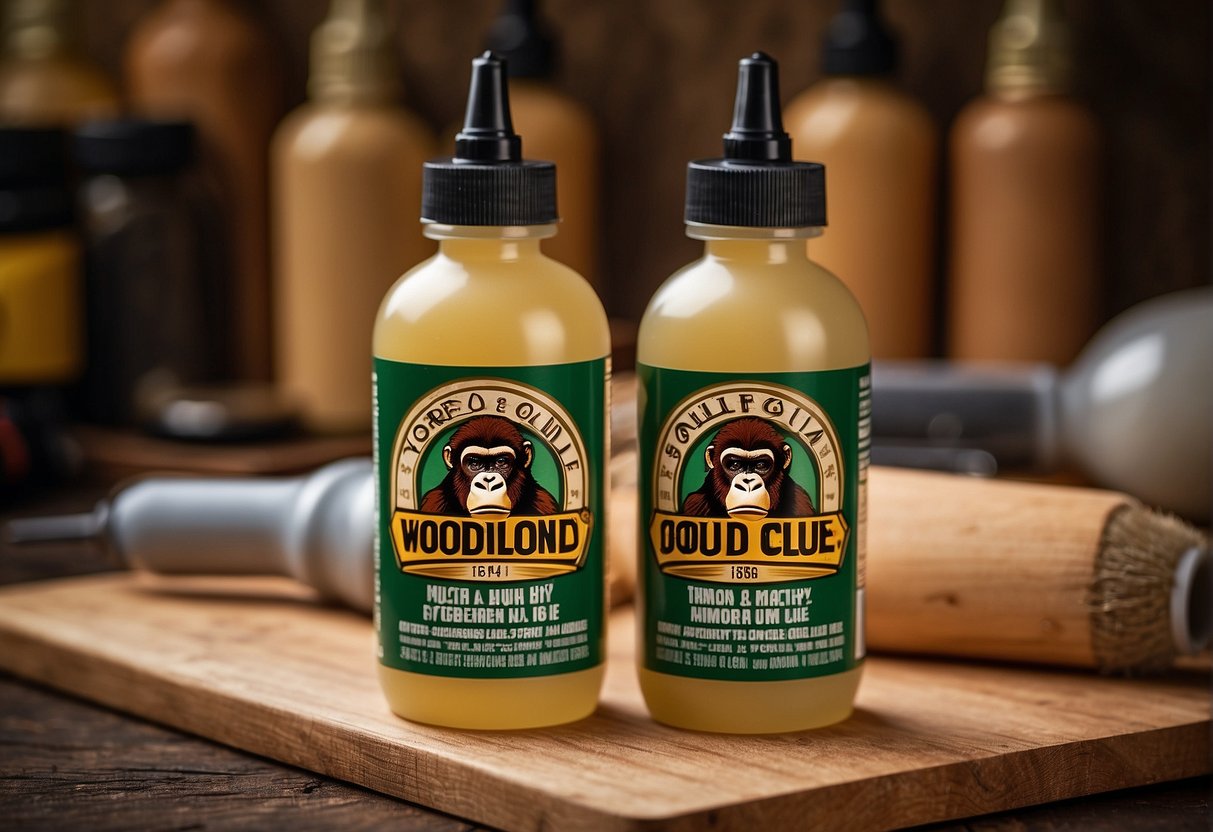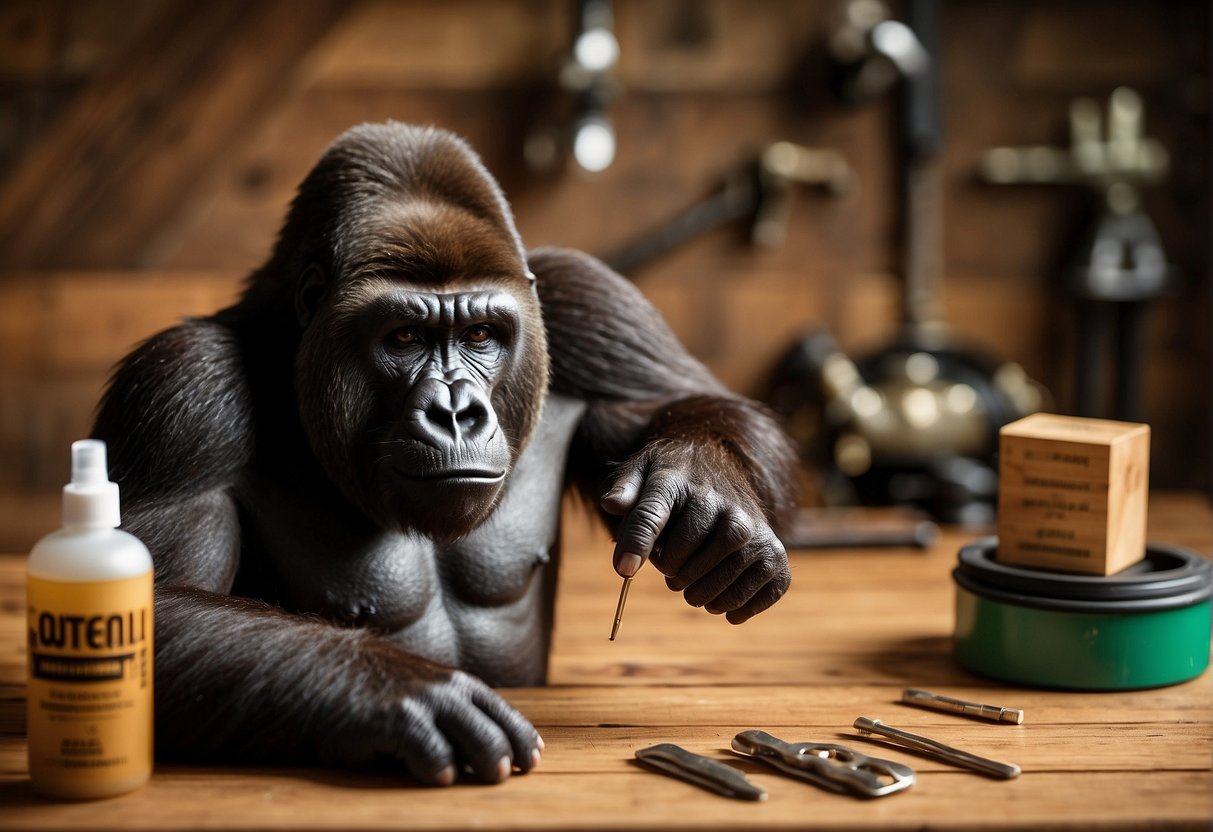When it comes to woodworking, selecting the right glue is crucial for the success of your project. Two popular choices are Gorilla Wood Glue and Titebond. Both brands offer a range of products with different features, making it difficult to determine which one is the best for your particular needs. In this article, I will compare Gorilla Wood Glue and Titebond across various factors to help you make an informed decision.
Comparing Product Features
When comparing Gorilla Wood Glue and Titebond, it’s essential to consider their product features. Gorilla Wood Glue is made with a PVA formula that offers a strong initial tack and fast set time. It dries clear and is paintable, making it ideal for a range of woodworking projects. Titebond, on the other hand, offers a range of products, including Titebond III, which is waterproof and ideal for outdoor use. Titebond II is suitable for interior use and offers a strong bond. Titebond Original is ideal for general woodworking projects and offers a strong initial tack.
Key Takeaways
- When selecting a wood glue, it’s essential to consider the product features to determine which one is best for your needs.
- Gorilla Wood Glue offers a strong initial tack and fast set time, while Titebond offers a range of products with different features, including waterproof and interior use options.
- Choosing the right wood glue can make a significant difference in the success of your woodworking project.
Comparing Product Features
When it comes to comparing Gorilla Wood Glue vs Titebond, there are several product features to consider. In this section, I will compare the adhesive types, water resistance, bond strength and durability, open time, and clamp time of both products.
Adhesive Types
Gorilla Wood Glue and Titebond both use PVA (polyvinyl acetate) as their primary adhesive. However, Gorilla Wood Glue also contains polyurethane, which gives it superior strength and durability compared to Titebond.
Water Resistance
Both Gorilla Wood Glue and Titebond are water-resistant, meaning they can withstand exposure to water without losing their bond strength. However, Gorilla Wood Glue is waterproof, which means it can be used for outdoor projects that will be exposed to rain and moisture.
Bond Strength and Durability
Gorilla Wood Glue is known for its strong bond and durability. It has a higher bond strength than Titebond, thanks to the addition of polyurethane. This makes it ideal for heavy-duty projects that require a strong and long-lasting bond.
Open Time and Clamp Time
Open time refers to the amount of time the glue remains workable after it is applied, while clamp time refers to the amount of time the glued pieces need to be held together with pressure before the glue sets. Gorilla Wood Glue has a shorter open time and longer clamp time compared to Titebond. This means that Gorilla Wood Glue sets faster, but you have more time to adjust the pieces before clamping.
In summary, Gorilla Wood Glue and Titebond are both great choices for woodworking projects. However, Gorilla Wood Glue has superior strength and durability, making it a better choice for heavy-duty projects. Titebond is a great option for projects that require a longer open time and shorter clamp time.
Application and Versatility
When it comes to choosing the right wood glue for your woodworking projects, it is important to consider the application and versatility of the product. In this section, I will compare the suitability of Gorilla Wood Glue and Titebond for different materials, indoor and outdoor use, and ease of use and cleanup.
Suitability for Different Materials
Both Gorilla Wood Glue and Titebond are versatile wood adhesives that can be used on a variety of materials. Gorilla Wood Glue is known for its versatility and can bond to wood, stone, metal, ceramic, and more. Titebond, on the other hand, is specifically designed for woodworking projects and is suitable for softwood and hardwood.
Indoor and Outdoor Use
When it comes to indoor and outdoor use, both Gorilla Wood Glue and Titebond are suitable for exterior projects. Gorilla Wood Glue is water-resistant and can be used for both indoor and outdoor projects. Titebond, on the other hand, is not recommended for exterior use as it can break down over time when exposed to moisture.
Ease of Use and Cleanup
Gorilla Wood Glue and Titebond are both easy to use and clean up. Gorilla Wood Glue has a longer open time, which means you have more time to adjust your pieces before the glue sets. Titebond, on the other hand, has a shorter open time, which means you need to work quickly. When it comes to cleanup, both glues are non-toxic and can be cleaned up with water.
In summary, both Gorilla Wood Glue and Titebond are versatile and easy-to-use wood adhesives. Gorilla Wood Glue is more versatile and can be used on a variety of materials, while Titebond is specifically designed for woodworking projects and is suitable for softwood and hardwood. When it comes to indoor and outdoor use, Gorilla Wood Glue is water-resistant and can be used for both indoor and outdoor projects, while Titebond is not recommended for exterior use. Finally, both glues are non-toxic and can be cleaned up with water.
Safety and Environmental Considerations
Toxicity and Safety
When working with wood glue, safety should always be a top priority. Both Gorilla Wood Glue and Titebond are non-toxic and safe to use. They are also FDA-approved for indirect food contact, which means they can be used on items that will come into contact with food, such as cutting boards or utensils.
It is important to note that while both glues are non-toxic, they should still be used with caution. Avoid contact with skin and eyes, and always work in a well-ventilated area. In case of accidental ingestion, seek medical attention immediately.
Environmental Impact
When it comes to the environmental impact of these wood glues, both Gorilla Wood Glue and Titebond are water-based, which means they are easy to clean up with water and do not require solvents. This makes them a more environmentally friendly option compared to solvent-based adhesives.
Additionally, both glues are low VOC (volatile organic compounds), which means they release fewer harmful chemicals into the air during use. This makes them a safer option for those concerned about indoor air quality.
Overall, both Gorilla Wood Glue and Titebond are safe and environmentally friendly options for woodworking projects. It is important to always follow safety guidelines and dispose of any unused glue properly to minimize environmental impact.
Economic Factors
Cost Comparison
When it comes to comparing Gorilla Wood Glue and Titebond, the cost is an important factor to consider. The price of these two products varies depending on the store and location. However, generally speaking, Gorilla Wood Glue is a premium product and is more expensive than Titebond.
That being said, it is important to note that Gorilla Wood Glue comes in larger sizes than Titebond, which may make it a better value for those who need to use a lot of glue. Additionally, Gorilla Wood Glue has a longer shelf life than Titebond, which can be a factor to consider for those who do not use glue frequently.
Product Availability
Both Gorilla Wood Glue and Titebond are widely available at most hardware stores and online retailers. However, it is important to note that some stores may carry one brand but not the other.
In terms of availability, Titebond may have an advantage as it is a more commonly used and well-known brand. This means that it may be easier to find in stores and may have more options available, such as different types of wood glue.
Overall, when it comes to economic factors, the cost and availability of Gorilla Wood Glue and Titebond are important factors to consider. While Gorilla Wood Glue may be more expensive, it may offer better value in terms of larger sizes and longer shelf life. Titebond, on the other hand, may have an advantage in terms of availability and variety of products.
Technical Specifications
Shelf Life and Storage
As a woodworker, I know how important it is to have a reliable wood glue that is easy to store and has a long shelf life. Both Gorilla Wood Glue and Titebond have a long shelf life of approximately 2 years when stored properly in a cool and dry place. It is important to keep the glue container tightly sealed after use to prevent it from drying out or becoming contaminated.
Standards and Certifications
When it comes to standards and certifications, both Gorilla Wood Glue and Titebond meet the Type I and Type II ANSI/HPVA specifications. These specifications ensure that the glue has a high level of water resistance and bond strength. Additionally, both adhesives meet the HVPA guidelines, which ensure that the glue is safe to use and does not contain harmful chemicals.
In terms of sandability, both adhesives can be sanded once dry. However, it is important to note that Gorilla Wood Glue is not recommended for use with staining or painting as it may affect the final finish. On the other hand, Titebond can be sanded, painted, and stained without any issues.
Overall, both Gorilla Wood Glue and Titebond are reliable and high-quality wood glues that meet industry standards and certifications. When deciding which one to use, it is important to consider your specific woodworking needs and requirements.
Frequently Asked Questions
Which wood glue has the highest bonding strength for woodworking projects?
Both Titebond and Gorilla Wood Glue are known for their high bonding strength. However, according to a comparison between the two, Titebond Ultimate III has a slightly higher bonding strength than Gorilla Wood Glue. That being said, both are excellent choices for woodworking projects.
Is Titebond a better choice for outdoor furniture compared to Gorilla Wood Glue?
Yes, Titebond III Ultimate Wood Glue is a better choice for outdoor furniture compared to Gorilla Wood Glue. Titebond III is waterproof and weather-resistant, making it ideal for outdoor applications. On the other hand, Gorilla Wood Glue is not recommended for outdoor use.
What are the drying times and clamping requirements for Titebond vs Gorilla Wood Glue?
The drying times and clamping requirements for Titebond and Gorilla Wood Glue are similar. Both require clamping for 30 minutes to 1 hour and have a drying time of 24 hours. However, Titebond III dries slightly faster than Gorilla Wood Glue.
Can Gorilla Wood Glue be used for structural applications where Titebond II or III is typically recommended?
Gorilla Wood Glue is not recommended for structural applications where Titebond II or III is typically recommended. Titebond II and III are designed for high-stress applications and have superior bonding strength compared to Gorilla Wood Glue.
What are the main differences between Titebond Ultimate and Gorilla Wood Glue Ultimate?
Titebond Ultimate is a waterproof glue that is ideal for outdoor applications, while Gorilla Wood Glue Ultimate is not recommended for outdoor use. Titebond Ultimate has a slightly higher bonding strength than Gorilla Wood Glue Ultimate, but both are excellent choices for woodworking projects.
Are there any specific situations where Gorilla Wood Glue is preferred over Titebond products?
Gorilla Wood Glue is preferred over Titebond products in situations where a longer open time is required. Gorilla Wood Glue has a longer open time than Titebond and can be repositioned for up to 20 minutes after application. This makes it ideal for complex woodworking projects that require more time to assemble.

Hi, I’m Sal Muller of Tooltrip.com. My DIY experience led me to understand essential power tools for home projects. Tooltrip.com guides enthusiasts and professionals in choosing right tools for any job. I provide concise top tool reviews for easier, efficient DIY.






